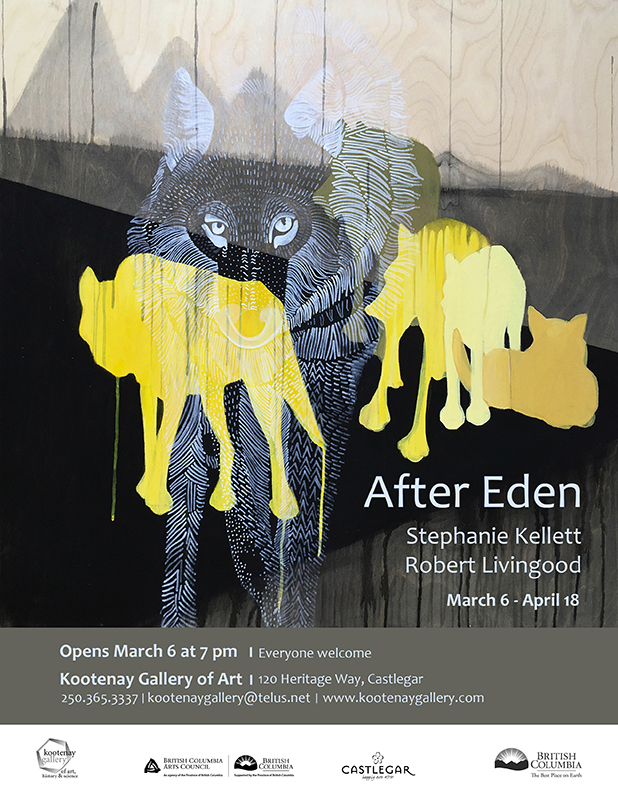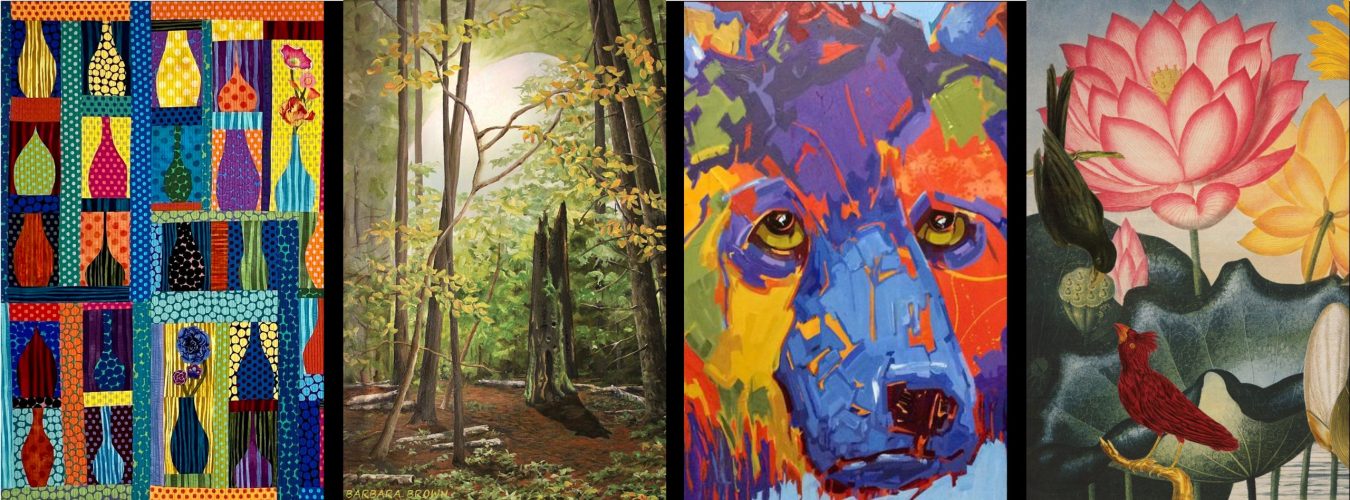
After Eden
Stephanie Kellett and Robert Livingood
March 6 – April 18
Opens March 6 at 7:00 pm. Everyone Welcome
Artists Statement
After Eden is an exploration into landscapes of barren desolation. It is a journey that is both physical yet simultaneously imaginary and dreamlike. Drawn by the energy of Spirit Animals, we travelled for two consecutive autumns to the far, boreal, sub-arctic North. We needed to share space with their forms; needing to be in proximity to their embodied consciousness; to breathe the same air as them; to receive what each individual species has to teach, and to feel that still, in some far out places where the dominant forces of industrial culture have not penetrated too deeply, things might still feel okay.
We needed animal medicine. Modern civilization takes its toll.
We had found it before, learning to re-wild in far out northern landscapes, living out of a tent for many weeks at a time on ground hallowed by grizzly bear paws. We knew where to look. Nonetheless, on these two journeys, the presence of the wild ones was faint.
This inspired us to imagine and wonder about what vacant landscapes in the future might feel like-landscapes that modern industrial culture seems determined to create, where all that remains of these creatures are faint traces, diaphanous ghosts.
How lonely to exist in such a human centric world!
In our imaginings, a character emerged: veiled, solitary, clothed in funeral black. We allowed space for this energy, and began to look through her eyes as she scanned the vast expanse of parched tundra (Paleoclimatologists say the Yukon is the warmest its been in 13,600 years); walking with her as she moved over ancient topography and feeling it crunch under heavy boots; listening through her ears to the frequencies of wind, sky, water, and rocks. She came to represent the witness acknowledging the increasing emptiness of the wild world, and a means by which to honor whatever of it will remain.
Curator Statement
Maggie Shirley
“We are animals, yet we behave like gods.” – from Hamlet, William Shakespeare
At what point did we cross over from being a species of primates into being that complex creature known as “human being”? Behaviour science says human minds are capable of feats such as abstract thought and generative computation (the capacity to generate new concepts and mix together concepts), among others. Those abilities have brought our species a quality of life that is incomparable in comfort, in convenience and in technological advancement. But what has become of our capacity to understand and follow our instinctual bodies and knowing? Despite our reliance on rational thought, our animal body remains.
Many of us have been experiencing what has been termed ‘ecological grief’ as a result of loss of species, habitat and other ecosystems due to climate change. It may be compounded by current political and social conflict, and other crises, most recently the corona virus.
One of the first steps in dealing with grief is acknowledging that it is there. Stephanie Kellett and Robert E. Livingood have captured that sense of physical loss and emotional bereavement through their mixed media exhibition. While they have personified death through the black figure in the video component, the majority of the show focuses on Kellett’s paintings of animals, which traverse the gallery as ghost-like beings. Livingood’s soundscape, recorded in situ, provides an atmosphere of alienation and loss.
While we humans may often be removed from our instinct, animals survive because of it. We all know of the innate power that draws a salmon up a river or a bird song to attract a mate. But what happens to the animals (and plants) when an unhealthy environment tricks their instinct? How do they cope?
We humans tend to underestimate the emotional capacity of other species. Animals as disparate as elephants and magpies have been known to grieve deaths of members of their herd or flock. Animals are also known to change their behaviour in the face of a crisis. Australian koalas, usually terrified of humans, trusted us to rescue and care for them during intense fires. Some polar bears that traditionally dive in the Arctic Sea to hunt seals are now learning to catch fish in rivers. The adaptability of these and other animals may be their key to responding to a chaotic environment.
Kellett and Livingood were startled by the absence of animal life on their trip to the north. They responded with art. Maybe we as a species can shake ourselves out of our denial through art or through observation of the changes around us. Do we recognize our animal selves? Do we realize the extent of our interdependence on the natural world and the plant and animal species that co-exist with us?
